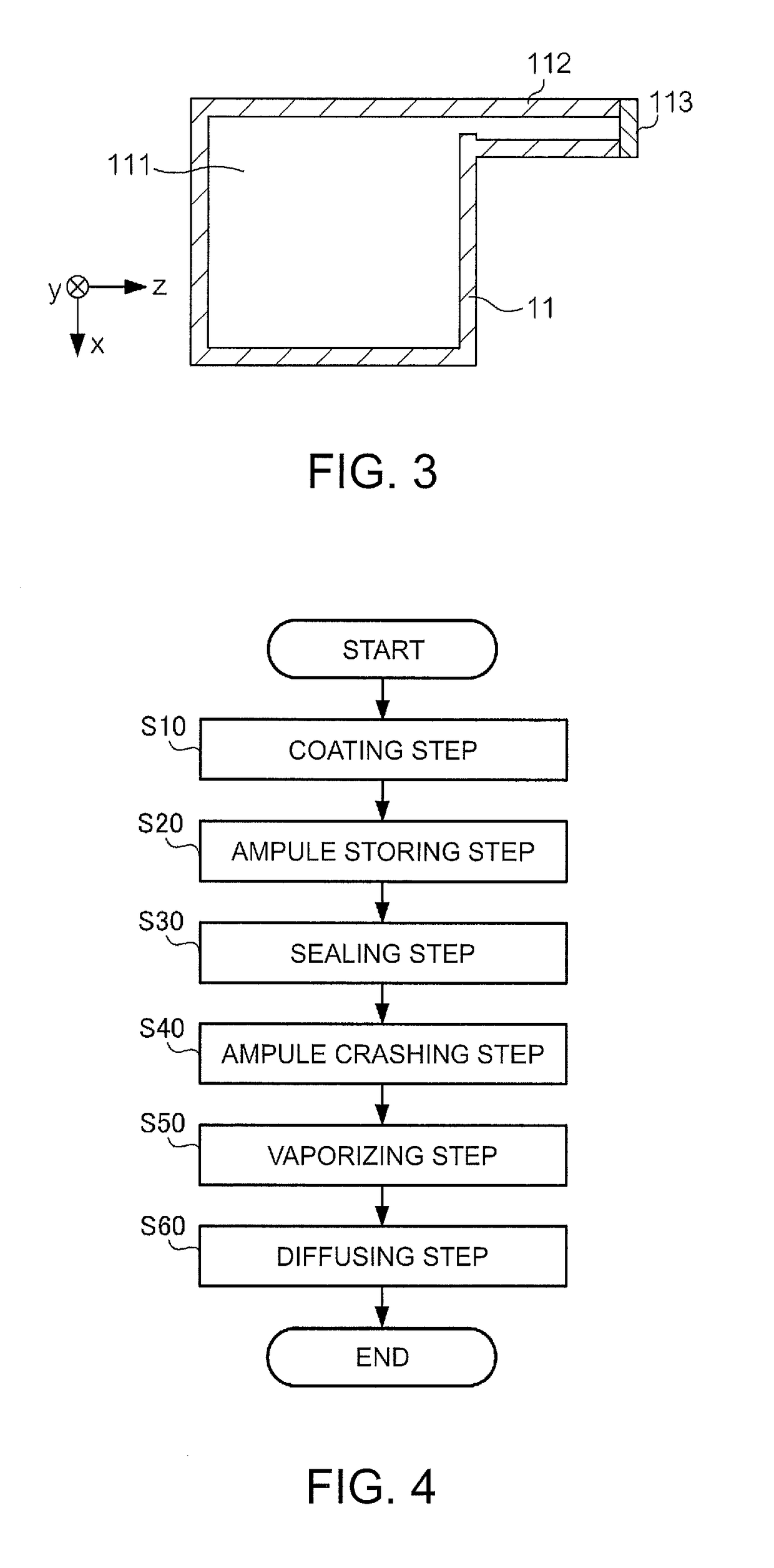Gas cell sealing method
a gas cell and sealing technology, applied in the direction of magneto-optic devices, instruments, manufacturing tools, etc., can solve the problems that the sealing precision cannot be achieved with these techniques, and the bonding heat applied to the sealant may put a thermal load on the gas cell or on the gas inside the gas cell, so as to improve the sealing precision and improve the sealing precision
- Summary
- Abstract
- Description
- Claims
- Application Information
AI Technical Summary
Benefits of technology
Problems solved by technology
Method used
Image
Examples
first embodiment
1. First Embodiment
(1) Configuration
[0022]FIG. 1 is a block diagram representing a configuration of a magnetic measurement device 1 according an embodiment. The magnetic measurement device 1 is a biometric device that measures biological conditions based on a measured index obtained by measuring magnetic fields produced by an organism, for example, such as a magnetic field produced by the heart (cardiac magnetic field) or the brain (cerebral magnetic field). The magnetic measurement device 1 includes a gas cell array 10, a pumping light irradiation unit 20, a probing light irradiation unit 30, and a detection unit 40. The gas cell array 10 has a plurality of gas cells. Each gas cell is filled with an alkali metal gas (for example, cesium (Cs)). The pumping light irradiation unit 20 outputs pumping light that interacts with the alkali metal atoms (for example, light of 894 nm wavelength corresponding to the D1 line of cesium. The pumping light has a circularly polarized light compone...
second embodiment
2. Second Embodiment
[0041]FIG. 6 is a diagram representing a method for sealing the gas cells 11 according to Second Embodiment. In contrast to First Embodiment in which the lens 202 is used as the optical element that converges a laser beam, Second Embodiment uses an optical element 205 in place of the lens 202. The optical element 205 is an optical element that controls a laser beam for more efficient and selective irradiation than in First Embodiment. The optical element 205 forms a beam intensity distribution of a shape that conforms to the disposition of the sealant 204. For example, when the sealant 204 is disposed in a ring-like fashion around the opening, the optical element 205 controls the beam intensity distribution in such a way as to conform to the ring-like disposition of the sealant.
[0042]The optical element 205 has a converging function to converge a laser beam, and a ring-forming function to form a ring-like laser beam intensity distribution. Here, the specific phas...
third embodiment
3. Third Embodiment
[0045]FIG. 7 is a diagram representing a method for sealing the gas cells 11 according to Third Embodiment, analogous to FIG. 5 of First Embodiment. In First Embodiment, the lens 202 (optical element) and the pressurization substrate 203 are configured as separate members. In contrast, Third Embodiment uses a pressurization substrate 206 provided as an integral unit of an optical element and a pressurization substrate. An optical element (for example, diffraction grating) that controls a laser beam is disposed on the surface 206a of the pressurization substrate 206. The pressurization substrate 206 is pressed against the lid 113 on the surface 206b opposite the surface 206a.
[0046]In this embodiment, aberration and other such effects can be reduced by the provision of the integrally provided optical element and pressurization substrate, and a laser beam can be irradiated even more efficiency and selectively.
PUM
| Property | Measurement | Unit |
|---|---|---|
| temperature | aaaaa | aaaaa |
| width | aaaaa | aaaaa |
| transparent | aaaaa | aaaaa |
Abstract
Description
Claims
Application Information
 Login to View More
Login to View More - R&D
- Intellectual Property
- Life Sciences
- Materials
- Tech Scout
- Unparalleled Data Quality
- Higher Quality Content
- 60% Fewer Hallucinations
Browse by: Latest US Patents, China's latest patents, Technical Efficacy Thesaurus, Application Domain, Technology Topic, Popular Technical Reports.
© 2025 PatSnap. All rights reserved.Legal|Privacy policy|Modern Slavery Act Transparency Statement|Sitemap|About US| Contact US: help@patsnap.com



